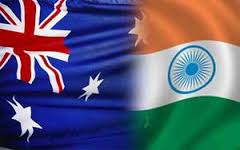 The government has cleared 16 foreign investment proposals, including that of HDFC Capital and Ageon Religare Life Insurance Company, amounting to Rs 4,722 crore.
The government has cleared 16 foreign investment proposals, including that of HDFC Capital and Ageon Religare Life Insurance Company, amounting to Rs 4,722 crore.
The investment proposals were approved following the recommendation for the same by the Foreign Investment Promotion Board (FIPB), headed by economic affairs secretary Shaktikanta Das.
“The government has approved 16 proposals of foreign direct investment amounting to Rs 4,722 crore,” the finance ministry said in a statement.
However, it rejected 8 proposals including that of Cipla Health Limited and Apollo Hospitals Enterprise Limited.
The Board cleared proposal of HDFC Capital Advisors Limited which alone entails investments of Rs 2,400 crore.
The company sought approval for issue of units to Green Light, it said.
“HDFC Fund proposes to make investments in equity, equity linked instruments, redeemable preference shares, non-convertible debentures and other debt securities of listed or unlisted investee companies engaged in real estate construction development projects which are permitted under the SEBI AIF Regulations as a Category II AIF,” it said.
Besides, Ageon Religare Life Insurance’s proposal worth Rs 559.96 crore was cleared by FIPB.
The approval was sought for the transfer of shares to Aegon India Holding thereby raising the foreign shareholding from 26 percent to 49 percent.
Among others, Sun Pharma Research Advanced Company Ltd’s proposal worth Rs 250 crore, Synergia Life Sciences Pvt Ltd (Rs 40 crore) and the post facto approval for Aditya Birla Nuvo’s Rs 377 crore plan were cleared during a meeting held on 29 September.
India e-commerce story strong, to hit $35 bn by 2019: Nomura.
 India e-commerce story strong, to hit $35 bn by 2019: Nomura
India e-commerce story strong, to hit $35 bn by 2019: Nomura
Indian e-commerce sector’s growth looks strong and is expected to reach $35 billion by 2019, says a report.
“The growth of India e-commerce remains strong, tracking our expectations of reaching $35 billion by 2019,” Nomura said in a research report.
The report, however, noted that the focus needs to move towards the roadmap to profitability, where “some progress is visible but a lot is still in the works”.
It further said that there are areas where significant progress needs to be made and that include diversification of categories, less discounting, improved logistics and benign legislation like GST. On these fronts, there are “still works in progress and remain big areas of investment”, the report said.
According to Nomura, the festive sale season kicked off with a bang for Indian eCommerce players, but still is lower in comparison with China and the US.
In China, Alibaba during its ‘Singles Day’ on November 11, 2014 sold goods worth $9 billion, while in the US, during Cyber Monday (Monday after Thanksgiving) and Black Friday, sales of around $3 billion each were recorded in 2014.
In comparison, the quarterly expectations for India’s holiday sales are closer to $4 billion.
Typically the festive season (October to December) accounts for about 35-40 per cent of annual sales for the e-commerce firms.
According to Technopak, e-commerce in India recorded around $7 billion in annual sales in FY15, and is expected to generate about $10 billion in FY16, leading to sales expectations of around $4 billion for the e-commerce firms this festive season.
Relaxed tax residency rules to help MNCs

Foreign companies with Indian shareholders won’t have to pay taxes here for their worldwide income unless they are managed from India on an everyday basis. If these foreign companies are managed from outside India, whether or not they are promoted by resident Indians, they will have to pay taxes in India only for the income they earn in the country.
This major relaxation is being built into the place of effective management (POEM) rules being finalised by the finance ministry, government sources told FE. The POEM concept that was included in the I-T Act early this fiscal had raised fears among many multinational companies with Indian promoters or major shareholders that New Delhi would lay claim to taxes on their incomes attributable to other geographies.
While Indian-incorporated firms (Indian companies) are taxed at 30% plus dividend distribution tax (DDT), non-resident (foreign) companies are taxed at 40% on Indian income without DDT. Although the tax rates on foreign companies are higher, the prospect of subjecting the worldwide income to taxation here could have potentially hit many MNCs with Indian stakeholders.
The proposed lenient POEM rule, analysts said, would give the likes of UK’s Jaguar Land Rover (which has the Indian parent Tata Motors) a chance to convince the Indian tax authorities that the UK firm’s commercial decisions are taken by the local management there and avoid paying taxes for the income in the UK and elsewhere in India.
Similarly, foreign subsidiaries of state-owned oil companies such as ONGC Videsh’s Imperial Energy incorporated in Cyprus and ONGC Nile Ganga doing oil exploration in Sudan, Syria and Venezuela can potentially show that their managerial and commercial decisions are ‘in substance’ made at the local level although OVL, the Indian holding company, is under the direct administrative control of the government of India. The same is true for HPCL’s Singapore subsidiary Prize Petroleum International.
“Putting a management in place is a shareholder decision, not a management decision. Promoters getting into any other role would amount to overstepping shareholder rights, going by the strict interpretation of law. The POEM as a principle must cover only management decisions,” said Rahul Garg, leader, direct tax, PwC India.
According to experts, seeking permission from an Indian parent on a decision taken by an overseas subsidiary to see if it is in line with the global policy of the parent may not ordinarily amount to the parent exercising management control, unlike the parent passing on a centrally taken decision to the foreign associate. However, where the senior management of foreign associates of Indian firms are based in India or have common board members based in India, the overseas entity may find it hard to prove that management decisions are taken from outside India. Also, foreign associates of Indian companies lacking skilled managerial personnel or do not assume business risks on its own, could have a tough time convincing the taxman in India that they are not Indian residents.
Prior to the Finance Act, 2015, a company was considered an Indian resident if its control and management were wholly in India throughout the financial year. Since some Indian companies sought to avoid resident status and taxes on their worldwide income by holding one or two board meetings outside India, the government changed the residence definition saying that any company, the ‘place of effective management’ of which is in India, would also be a resident company. Tax residence is a place from where key management and commercial decisions necessary for running the company are, in substance, made. According to experts, this OECD definition of tax residence relies on the substance of the organisation’s structure than its legal form. The government is bringing out clarifications as there is not much global guidance on the concept.
Points to note:
* Mere shareholder rights with Indians won’t result in resident status
* Only managerial decisions taken here will make foreign firms Indian residents and liable to pay tax for entire global income here
* Foreign firm has to prove management independence to avoid tax residence if board members are common with that of Indian ones.
Source: http://www.financialexpress.com/article/economy/relaxed-tax-residency-rules-to-help-mncs/156692/
India takes fresh guard to boost trade and economic ties
 The slowdown in China provides India another opportunity to make deep inroads into the African continent, strengthen business and economic ties.
The slowdown in China provides India another opportunity to make deep inroads into the African continent, strengthen business and economic ties.
The India-Africa summit will be a perfect setting for business communities from India and African nations to explore areas of cooperation and provide a roadmap to their governments.
Economic and trade relations between India and Africa have been on the slow track despite several Indian companies having a presence in the continent. The current trade is estimated around $75 billion. Experts say there is potential for this to go past $100 billion. But Commerce and Industry Minister Nirmala Sitharaman is cautious not to cite a number. More than 165 Indian companies invested in Africa between January 2003 and July 2015 in telecom, infrastructure, pharmaceuticals, healthcare and elsewhere.
India official says deeper cooperation in agriculture and agro-processing, engineering, textiles, leather and pharmaceuticals would have a positive impact on food security, raise health standards and create jobs in Africa and India. Food processing is a key area identified by both sides. Tourism too holds promise.
“There is clear intention that we will participate in African manufacturing and they’ll do whatever they can do to Make in India,” says Rajan Bharti Mittal, vice chairman of Bharti Enterprises.
Several African countries have high growth and are keen to engage with India.
Others would want Indian expertise in various sectors to speed up economic expansion. “There’s been growing interest in many African countries to do more business with the East and that includes India and China… Africa is opening to everybody who wants to do business,” says Zimbabwe trade minister Mike Bimha.
But there are issues to be addressed for smoother trade ties. Connectivity, banking links and security issues must be resolved. Trade experts say India needs to reorient strategy to boost ties.
“For the Africa-India trade potential to be realised, India must adopt an investment-led approach. We should support our African partners in development projects and handhold them in executing these efficiently,” says Biswajit Dhar, professor at JNU.
India remains less exposed to external risks, says Moody’s
 Forecasting that India will clock the highest growth rate of 7-7.5 per cent among G20 economies in 2015 and 2016, Moody’s Investors Service on Thursday said the country is less exposed to external shocks, and the positive rating outlook reflects resilient growth and reforms momentum.
Forecasting that India will clock the highest growth rate of 7-7.5 per cent among G20 economies in 2015 and 2016, Moody’s Investors Service on Thursday said the country is less exposed to external shocks, and the positive rating outlook reflects resilient growth and reforms momentum.
“India is less exposed to global risks because of its more resilient economic growth and the impact of positive policy reforms momentum,” the rating agency said.
Emerging market sovereigns have diverging shock-absorption capabilities to withstand the risks that will continue to impact global credit quality in 2015-16, says Moody’s in a report published on Thursday.
The report focuses on five Baa-rated sovereigns – Turkey, Brazil, South Africa, India and Indonesia.
“India is less exposed to external shocks than the other sovereigns discussed here. The positive outlook on its Baa3 rating reflects our view that the relatively resilient growth and the policy reform momentum will slowly stabilise inflation, improve the regulatory environment, increase infrastructure investment and lower government debt ratios,” it said.
In the report titled ‘Baa-rated Sovereigns: Diverging Resilience to Developing Global Risks’, Moody’s believes the main external risk facing EMs is the potential for a prolonged risk aversion, prompted by hopes of normalisation of US monetary policy and possibility of a sharper-than-expected China slowdown .
It also talks of country-specific challenges exacerbating this external risk.
“In contrast, we forecast strong growth in India of around 7-7.5 per cent per year in 2015-16, the highest among the G20 economies, which is supported by lower oil prices that will reinforce gradual growth-enhancing reforms,” it said.
Moody’s said although India, South Africa and Brazil have weaker fiscal positions than Turkey and Indonesia, these governments are less reliant on foreign currency and non-resident funding (government external debt).
The rating agency made a special mention of India’s significant monetary tightening in 2013, coupled with some fiscal consolidation, which is “an example of effective macroeconomic management that restored macroeconomic stability, albeit at the expense of near-term growth”.
“However, coupled with structural reforms to address regulatory and infrastructure weaknesses, lower inflation and current account deficit outcomes have set the pace for monetary loosening which commenced in 2015. This active policy response to counter emerging risks contributed to the positive outlook,” it said.
Acknowledging that foreign participation in the domestic debt market provides additional source of financing and reduces sovereign yields, Moody’s said it may at the same time transmit global financial shocks to local-currency sovereign bond markets and increase yield volatility.
“Credible and effective macroeconomic management can stabilise capital flows… If macroeconomic repair is coupled with longer-term structural reforms such as improved regulation and governance, the sovereign credit profile benefits from the ensuing competitiveness gains,” the rater said.
Turkey and Indonesia have fiscal profiles that compare favourably to the Baa median and are stronger than those of India, Brazil and South Africa.
According to the report, the trends in global capital flows have caused Brazil and Turkey to register the sharpest exchange rate depreciation and loss of reserves in the first half of 2015 while India proved comparatively resilient to these market developments.
Overall, Turkey stands out as most vulnerable to external risks because of its high reliance on external capital and large stock of external debt due annually combined with heightened political risks.
While Brazil is less reliant on external capital, it has already experienced significant financial market turbulence because of the country’s weak growth outlook, ongoing deterioration of its fiscal metrics and challenging political landscape.
South Africa and Indonesia are primarily exposed to financial market turbulence through their trade links with China and a period of low commodity prices.
“If Chinese growth is slower than expected, this could delay both countries’ cyclical economic recoveries and affect capital flows,” Moody’s said although both countries have adequate resources to meet their needs in periods of adverse market conditions.
Source: http://www.businesstoday.in/current/economy-politics/india-remains-less-exposed-to-external-risks-says-moodys/story/225142.html
Start-up investments in India to see three-fold rise to $6.5 bn in 2015: Nasscom

India will witness about $6.5-billion (Rs 42,300 crore) funding in start-ups this year, as global investors look at investing in firms that build products and solutions for the local market, while using them for emerging markets in Asia, Africa and Latin America. India is the world’s third largest start-up hub.
Global private equity (PE) and venture capital (VC) firms spent $2.2 billion (Rs 14,300 crore) in 179 Indian start-ups in 2014. Till October, these firms doubled their investments to $4.9 billion (Rs 31,900 crore) and expect to increase them to $6.5 billion by the end of the year, according to industry body National Association of Software and Services Companies (Nasscom). Indian start-ups that received funding doubled to 400 in 2015, said a Nasscom report, released during the product conclave that began Tuesday. The report added investors had reaped returns in 2015, with exits touching $700 million.
India sees four start-ups emerge every day. Those who get funded get an average valuation of $2.7 million and nearly two thirds of them are concentrated in Bengaluru, Mumbai and the National Capital Region.
The number of start-ups in India is set to cross 4,200 by the end of 2015. About 1,200 technology start-ups were incepted in India this year, of which more than 50 per cent were in the e-commerce, consumer service and aggregator space. Unlike in the West, a majority of the Indian start-ups were focused on solving community problems using technology solutions in health care, education, social platforms, hyper local services and analytics. “Apart from positively impacting the lifestyles of citizens involved, start-ups are creating innovative technology solutions that are addressing the key social problems that India is facing and creating significant growth opportunities for stakeholders,” said R Chandrashekhar, president of Nasscom. There are about 292 active angels and 156 active VC and PE players in the country.
The number of active investors has more than doubled from 220 in 2014 to 490 this year. Eight of the top-10 investing PE, VCs in India is foreign.
The number of accelerators and incubators has grown by 40 per cent over 2014 to touch 110. India has also emerged as the youngest start-up country with the average age of start-up founders at 28 years.
The second edition of 10,000 Start-ups Report has also accommodated a 10-point agenda for the government to cultivate the start-up culture of India,including definition of start-ups, taxing rules, regulations in terms of funding, online payments and branding.
Source: http://www.business-standard.com/article/companies/start-up-investments-in-india-to-see-three-fold-rise-to-6-5-bn-in-2015-nasscom-115101300983_1.html
Australia to collaborate with Indian researchers
 The Australian government, through the Australia-India Strategic Research Fund (AISRF), would collaborate with Indian researches in the field of agriculture, mining, energy, health etc. The Australian government has earmarked $84 million to be spent over three years in creating infrastructure, awarding fellowship and scholarship to promote research between the two countries.
The Australian government, through the Australia-India Strategic Research Fund (AISRF), would collaborate with Indian researches in the field of agriculture, mining, energy, health etc. The Australian government has earmarked $84 million to be spent over three years in creating infrastructure, awarding fellowship and scholarship to promote research between the two countries.
“The Australian government greatly values strong relationship with India, particularly in education and research. We have a roadmap to promote bilateral research between the two countries. During his visit to Australia, Prime Minister Narendra Modi identified sectors like agriculture, mining, energy, health etc for research, so we have decided to enhance cooperation between the two countries in these areas, ” said Australian Minister for Education and Training Christopher Pyne, who is in India to promote research collaboration between the two countries and also to highlight the opportunities for enhanced collaboration between Australia’s world-class education system and Indian institutions.
The AISRF is Australia’s largest fund dedicated to bilateral research with any country and one of India’s largest sources of support for international science.
The AISRF helps Australian researchers from public and private sectors to participate with Indian scientists in leading-edge scientific research projects and workshops.
Taking a step forward in this direction, the minister on Saturday officially opened new facilities at the Indian Institute of Technology Bombay (IITB)-Monash Research Academy.
The collaboration between the IITB and Monash University will see students receive a joint PhD from both institutions, with the added benefit of exposing a large cohort of young researchers to cutting-edge international research.
“The Australian government, through the AISRF, was one of the early contributors to this joint venture, providing $1.5 million in seed funding to establish the IITB-Monash Research Academy,” he said.
Meanwhile, he also visited Delhi Public School and launched a pilot project linking schools in India and Australia.
The Australia-Asia Building Regional Intercultural Dialogue and Growing Engagement, or BRIDGE, connects Australian teachers, students, and school communities with their peers in Asia so they can exchange knowledge.
“The BRIDGE programme connects Australian schools to schools around the world so that students and teachers alike can learn from one another and build lasting cultural ties and skills,” Pyne said.
“Strengthening partnerships between school leaders, teachers, and school communities in India and Australia helps us build strong education relationships and share our ideas and knowledge,” he said.